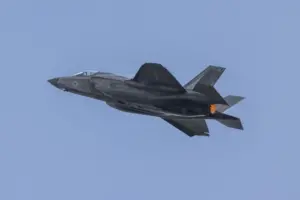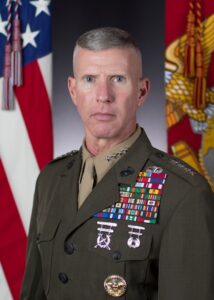The Acting Commandant of the Marine Corps ordered a two-day safety stand-down of aviation units following three crashes in less than two months.
Most recently, on Sept. 17 a pilot flying an F-35B from the Marine Fighter Attack Training Squadron 501 with the 2nd Marine Aircraft Wing safely ejected from the aircraft due to a mishap when flying out of Joint Base Charleston, S.C. The aircraft’s remains went missing for a time but were ultimately found on Sept. 18 several miles northeast of the base.
Unusually, the military asked the public to help find the F-35 before debris was located.

A Sept. 18 Facebook post from Joint Base Charleston on Sept. 18 said the debris field was found in Williamsburg County, S.C., and the mishap is under investigation.
The two other recent aviation mishaps included a pilot killed when an F/A-18D Hornet crashed during training out of Marine Corps Air Station Miramar, Calif., shortly after taking off during a training exercise on Aug. 24 and three Marines killed when an MV-22B Osprey crashed on Melville Island off the coast of northern Australia on Aug. 27.
Following these mishaps, Acting Commandant of the Marine Corps Gen. Eric Smith directed all service aviation units to begin a two-day stand-down “to discuss aviation safety matters and best practices,” the service said.
During this stand-down, aviation commanders are directed to lead discussions with their Marines that focus on fundamentals of safe flight operations, ground safety, maintenance flight procedures and maintaining combat readiness.
“This stand-down is being taken to ensure the service is maintaining operational standardization of combat-ready aircraft with well-prepared pilots and crews,” the Marine Corps said in a statement.
Smith already ordered a safety review after the Osprey crash last month. That unit-level review of the service’s culture of safety was due to be finished no later than Sept. 15. Commanders’ feedback on that earlier review is due to the Commandant of the Marine Corps Safety Division by Oct. 15. (Defense Daily, Aug. 31).
Notably, that previous review did not include a pause in training or operations.

“We will continue to train realistically for combat, full stop. We can, we must, and we will conduct that training from a start point of risk being reduced to the maximum extent possible. The hours we spend in this review is our chance to discuss HOW we will do this. It is not a venue for lectures, or for wagging our finger at a Marine or a command,” Smith said at the time.
The service said this latest measure seeks to invest time and energy in reinforcing established aviation community policies, practices and procedures.
Similarly, last year Naval Air Forces Command directed a “safety pause” for all non-deployed aviation units after a series of Navy and Marine Corps aircraft crashes to review risk management practices and conduct training on threat and error management (Defense Daily, June 13, 2022).
The 2022 crashes started with one crew member dead and two injured when an E-2D Advanced Hawkeye crashed off the coast of Virginia in March 2022 and then followed by three crashes in June. On June 6, 2022 a pilot died when an F/A-18E/F Super Hornet crashed during a training mission near Trona, Calif.; on June 8 five Marines died when an MV-22B Osprey crashed in a training mission; and on June 9 an MH-60S Seahawk helicopter crashed near El Centro, Calif., injuring one crew member.
Following the pause last year, a Navy T-45C Goshawk trainer jet crashed on Aug. 16 during a flight in Texas, with the pilot safely ejecting (Defense Daily, Aug. 17, 2022).